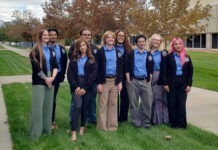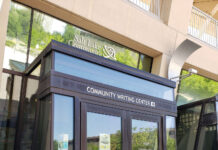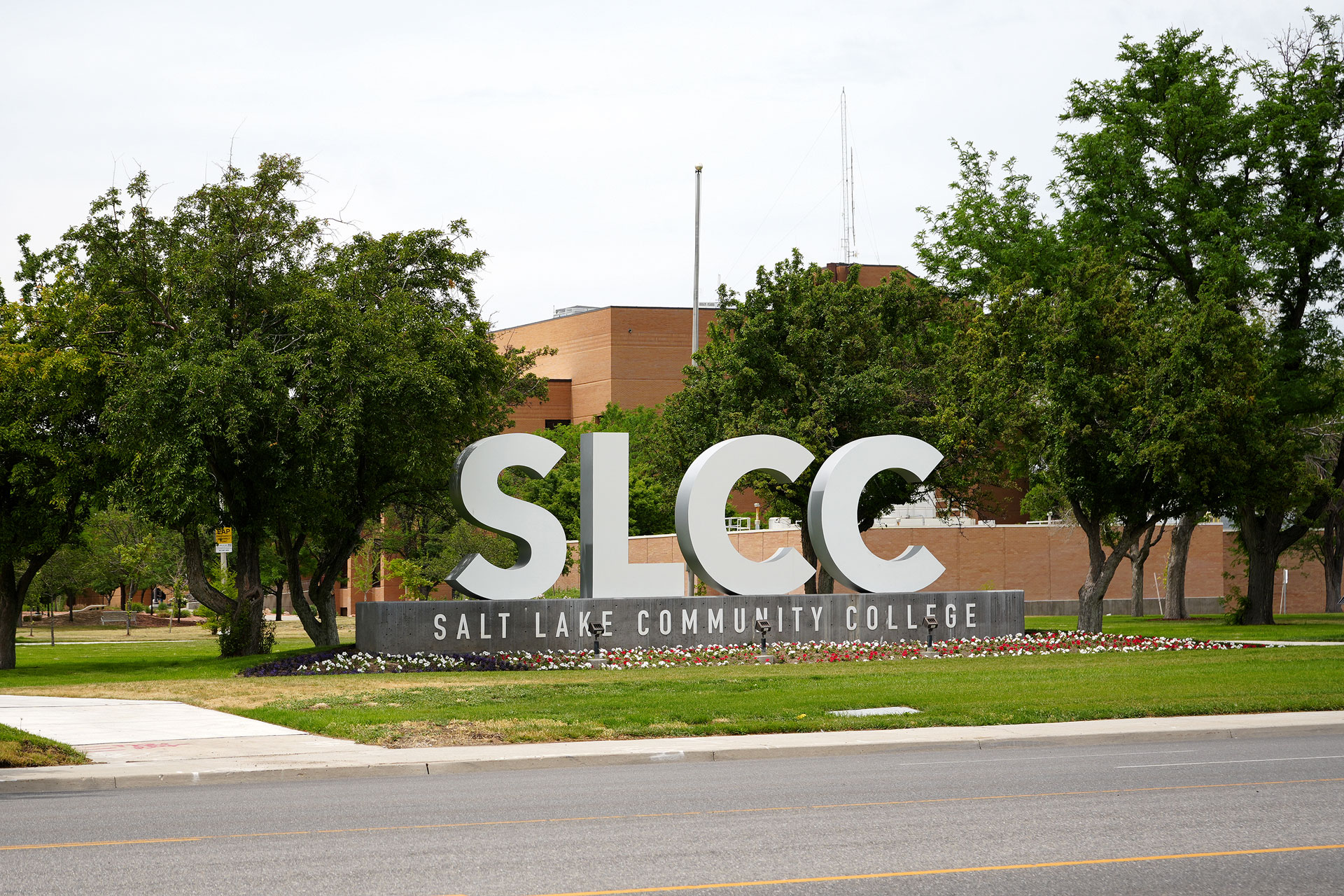
Key takeaways:
• SLCC leadership navigates HB 265 compliance with strategic approach and staffing adjustments
• Gail Miller Business School program cuts
• The methods used and difficulties encountered to reach the 10% reduction
While students were checking off their rubric requirements in their classes, faculty and administrators were checking off their own rubric to defend their positions and programs.
The outcomes for Salt Lake Community College due to House Bill 265 will cause the relocation of programs and lead to the closure of a longstanding center.
This transition has resulted in the discontinuation or modification of certain programs and certificates. Consequently, some faculty and staff will be left searching SLCC’s job posting website, electing to retire or choosing to move on.
One decision SLCC has elected to move forward with is the closure of its Community Writing Center at Salt Lake City’s Main Library next year.
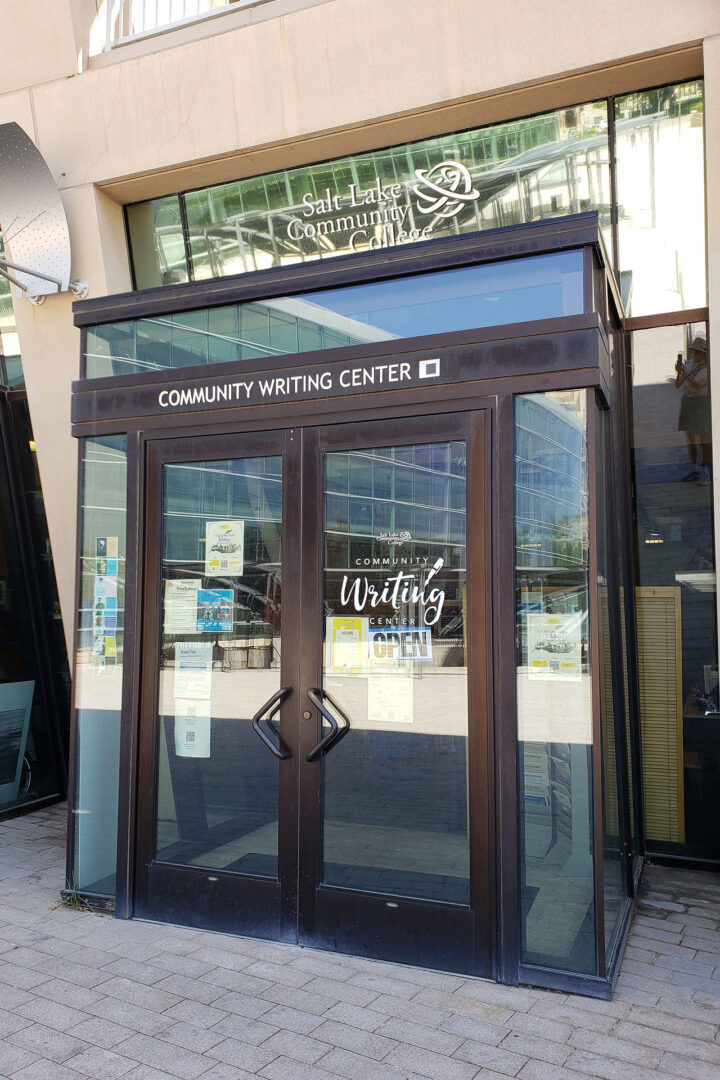
The elimination of the Community Writing Center
Daniel Baird, the associate director of the CWC and an associate professor in the English department at SLCC, expressed his thoughts about the loss.
“We’re so sad,” Baird said. “There are a lot of great programs, [a] lot of community outreach.”
Frank Cobbe, a 2024 writing studies graduate who works at the CWC as a publications coordinator and writing consultant, disagrees with the notion that the CWC is not in step with HB 265’s goals.
“The intention of HB 265 is to focus on career-oriented skills, and we do that here. We’ve worked with professional writers [and] semi-professional writers, we help people with schoolwork,” Cobbe said. “We help people with resumes. We still help people with career readiness skills.”
Baird said that he and Tif Rousculp, founding director of the CWC and professor of writing studies at SLCC, have made their staff a priority for this upcoming year.
“Tif and I agree that it’s staff first. We need to take care of our staff and give them professional opportunities in the final year. Let’s look at their career goals, and let’s see how we can help them,” Baird said. “If they’re still a student at SLCC, is there a job?”
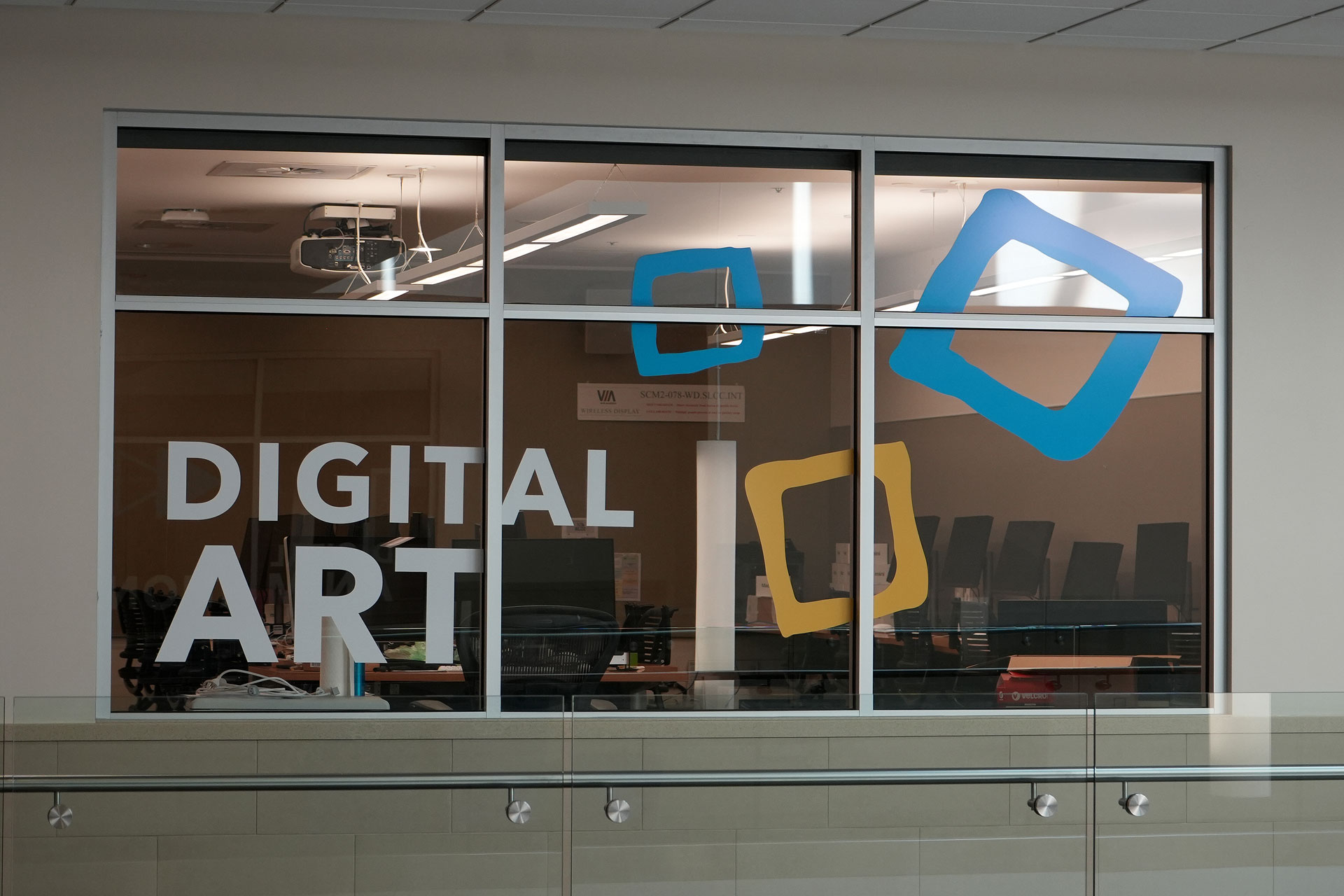
Visual Art and Design department will relocate
Shelley Bodily, currently the interim dean for SLCC’s School of Arts, Communication and Media, is slated to return to the role of associate dean in the Visual Art and Design (VAD) department once the changes from HB 265 are complete. She said the department will be housed under the Gail Miller Business School after the phaseout of the arts school.
Additionally, some of VAD’s specific associate of applied science (AAS) programs will be eliminated: graphic design, animation, illustration, multimedia and web design. Instead, the department will now offer a visual art and design AAS, with an emphasis in animation, graphic design or web design.
This change was something Bodily and her department had been planning prior to HB 265.
“What we’re doing here is we are combining all of our degrees to the one degree, and if the student wants to get a visual art design [degree], they will declare the visual art and design [degree], then they’ll take a core of six classes — the core classes have been picked from each of those emphases,” Bodily explained. “The idea is that once they take a core class and they figure out what they connect with, then they [will] fall into their concentration.”
Gail Miller Business School updates its programs
Certain degrees and certificates offered at the GMBS will be discontinued. AAS degrees that will be eliminated include accounting, computer science and information systems, marketing and small business. Certificates that will be eliminated include accounting, digital marketing, business and professional computing, database information systems and technology, and software development.
“Any of these programs that we’re eliminating had less than the recommended 40 students per year, and some of them had far less,” Trish Gorman, dean of the GMBS, explained. “We found [that] some of our programs were just out of step with the current and future world of work.”
The GMBS will provide flexibility and options for students who may not be sure of their career path when they initially enroll. Students can start with a general business path, then decide on a specialty in specific areas such as finance, accounting, marketing, entrepreneurship or digital business.
“We’re going to be able to get a lot more completions, a lot more consistency, a lot more efficiency and a lot more support for the students,” Gorman said. “We’ll have mostly a business degree that’s two years and you’re done, but you have that concentration or emphasis.”
Craig Caldwell, the dean of SLCC’s School of Science, Mathematics and Engineering, said via email correspondence that affected students due to the changes in classes and programs will be contacted by the academic department.
“Each program that is being discontinued under HB 265 will follow a ‘teach out’ process as prescribed by our accrediting body. As part of that process, affected students are contacted by the academic department and given information about how to navigate the changes and the timeline for completing the program. They are also given specific contact information for who to contact if they have questions,” Caldwell explained. “Students should always reach out to an academic advisor any time they have questions or concerns about their courses or programs.”
Certain staff positions at the GMBS will be eliminated. Gorman said that the GMBS is working with those affected.
“They have plenty of notice and they have plenty of support,” Gorman reassured.
The approach to SLCC’s reinvestment plan
SLCC leadership tasked with complying with HB 265 saw an opportunity to overhaul old courses and programs that weren’t producing many graduates.
In terms of personnel, 50 full-time and part-time employee positions are impacted — with 15 currently vacant. After HB 265 passed, most positions that became empty were not filled, which helped curb the number of people to be laid off.
Jason Pickavance, the interim provost for academic affairs, said: “I asked deans and my associate provost to be pretty judicious about refilling them. In a normal year, I probably would have allowed them to post those positions.”
Faculty and administrators were asked for feedback, but the decisions laid with SLCC’s leadership — which includes the board of trustees — and ultimately the Utah System of Higher Education and legislators.
“It wasn’t inclusive in the sense that, you know administration does have the responsibility at the end of the day to make these decisions — it’s not a purely democratic vote,” Pickavance explained. “It is one where there’s a certain authority that the board of trustees and cabinet has with respect to making decisions [about] a round of cuts and reallocation.”
The questions Pickavance requested his staff to ask themselves were threefold: does the class or program fulfill the SLCC mission, does it support a student completing a program that leads to a transfer or workforce, and most importantly, are there students in the course or program?
“Most employees impacted by layoffs may be able to access either an internal transfer opportunity into a different position at the college or pursue a retirement option. The reduction-in-force timeline will begin in August after SLCC’s HB 265 Reinvestment Plan has been approved by the Legislature,” Pickavance said.
The final amount that SLCC reduced and reinvested was a little larger than 10%.
Caldwell said: “Practically speaking, it is very difficult to hit a precise percentage of our overall academic budget under the constraints of HB 265. The process SLCC followed targeted 10% as required by law but the final amount varied from that somewhat after applying the institutionally approved rubric for program realignments.”
The processes used to get to the 10% cut and recognition of the challenges faced by college administrators
When Kati Lewis, director of the CWC until June 30, prepared the center’s proposal, she went beyond the 10% requirement.
“I submitted a proposal with Daniel Baird’s input for cutting 15% of the Community Writing Center staffing budget and current expense budget,” Lewis said. “We also created a really robust rubric narrative using the college’s non-instructional rubric to outline why we mattered and how our work was indeed connected both to the community and to students.”
Lewis acknowledged the quick turnaround time of the HB 265 requirements but would have liked to have seen a greater level of insight towards those who were significantly affected by the decisions.
“I understand and, in some ways, empathize with the difficult decisions that were being placed on administrators at the college. I do wish that they had been more empathetic and understanding of the situation they were placing those that were deeply impacted by their decisions,” Lewis said.
Bodily said the decision to move VAD to the GMBS was a surprise. Despite being informed throughout the process, it was a rapid completion of parameters and metrics which led to a quick but collaborative effort to meet the criteria of HB 265.
“I feel like everything came very quickly. I wouldn’t say that we were necessarily uninformed along the process,” Bodily said. “I think that maybe the final decision to essentially unravel our school [Arts, Communication and Media] and that it was going to different places was kind of unexpected for us. But the process — we knew what we were looking at. We worked together within our school to make the 10% [cut]. We met our 10% [cut]. The final decision was kind of a surprise.”
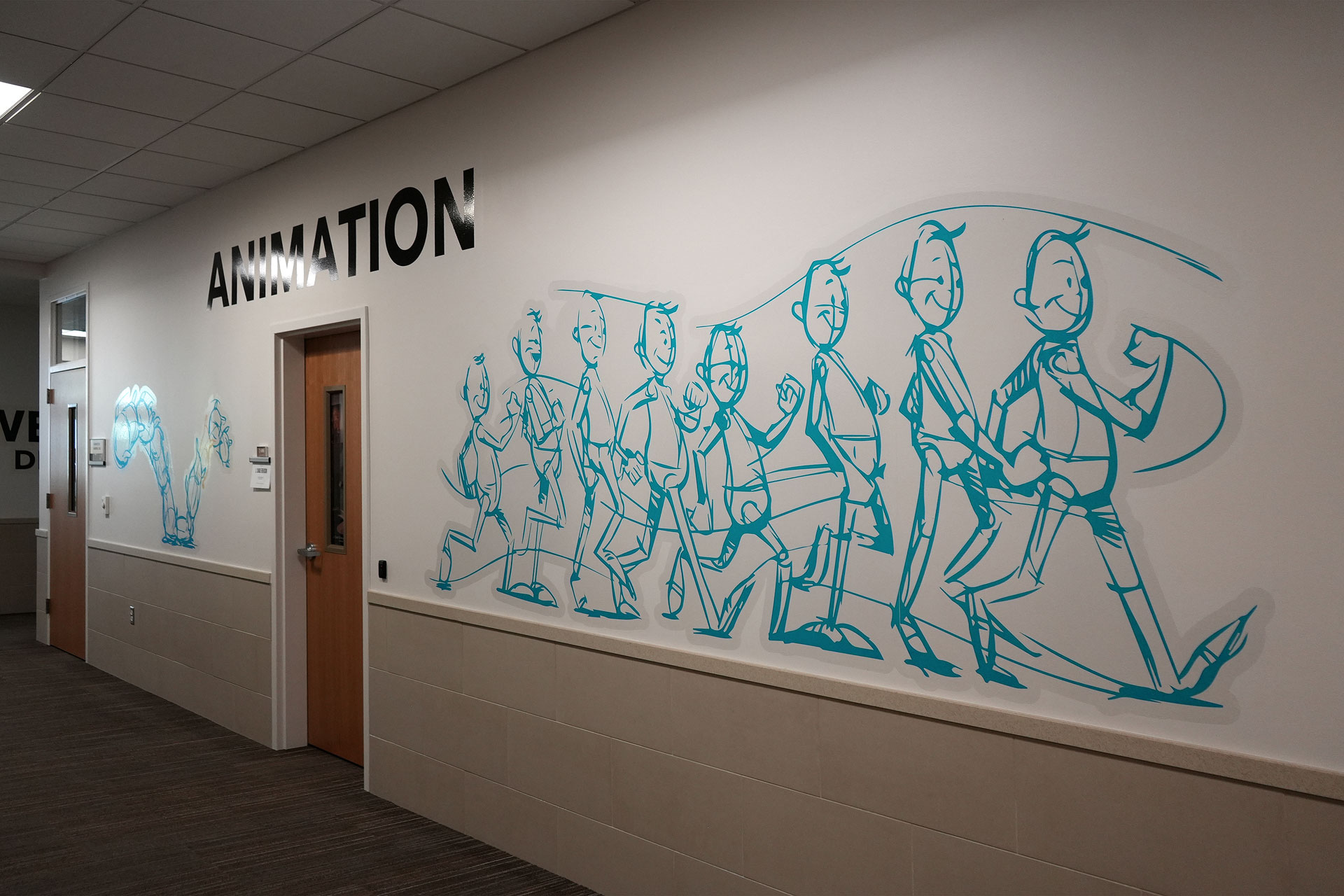
In the GMBS, there was a thorough debate among faculty members. The debate regarded the relevance of the curriculum to meet HB 265, student preferences and job market requirements. There were discussions on updating topics, shortening certificate durations, adjusting school locations, and frequency of teaching sessions.
Gorman spoke on the thoroughness of the debate held amongst GMBS faculty members.
“I think we had a very robust debate about whether it was best for the students, whether it met with job requirements from the employers in our community and in our network, and whether we were covering topics that were relevant or out of date,” Gorman said. “We had debate around the length, the topics, the location [of] where they should be in our school, and how often they should be taught. We had so much dialogue about all of this.”
Optimism remains steadfast during changes
Gorman said the importance of higher education is to develop critical thinking skills and storytelling abilities. It is still at the forefront for the GMBS to preserve general education requirements, such as history, philosophy, social science and history of economics.
Even though the parts of the VAD department will roll up under a new school (the GMBS), Bodily holds firm that the one thing that hasn’t changed is the faculty dedication to students.
“We have some of the most committed faculty out there. They truly believe in student success. We don’t know how things are going to settle. I do have faith that our faculty, they will do the best that they can for the students with what we’ve been given. I think that the faculty will do the best that they can to develop their curriculum to maintain those well-rounded students,” Bodily said. “We have some really great students that have a good skill set, and we have faculty that support that. We’re going to have a different organization, but we still have these great faculty within that new organization. We are working together; we’re going to do the best we can to maintain that education regardless of where we sit.”
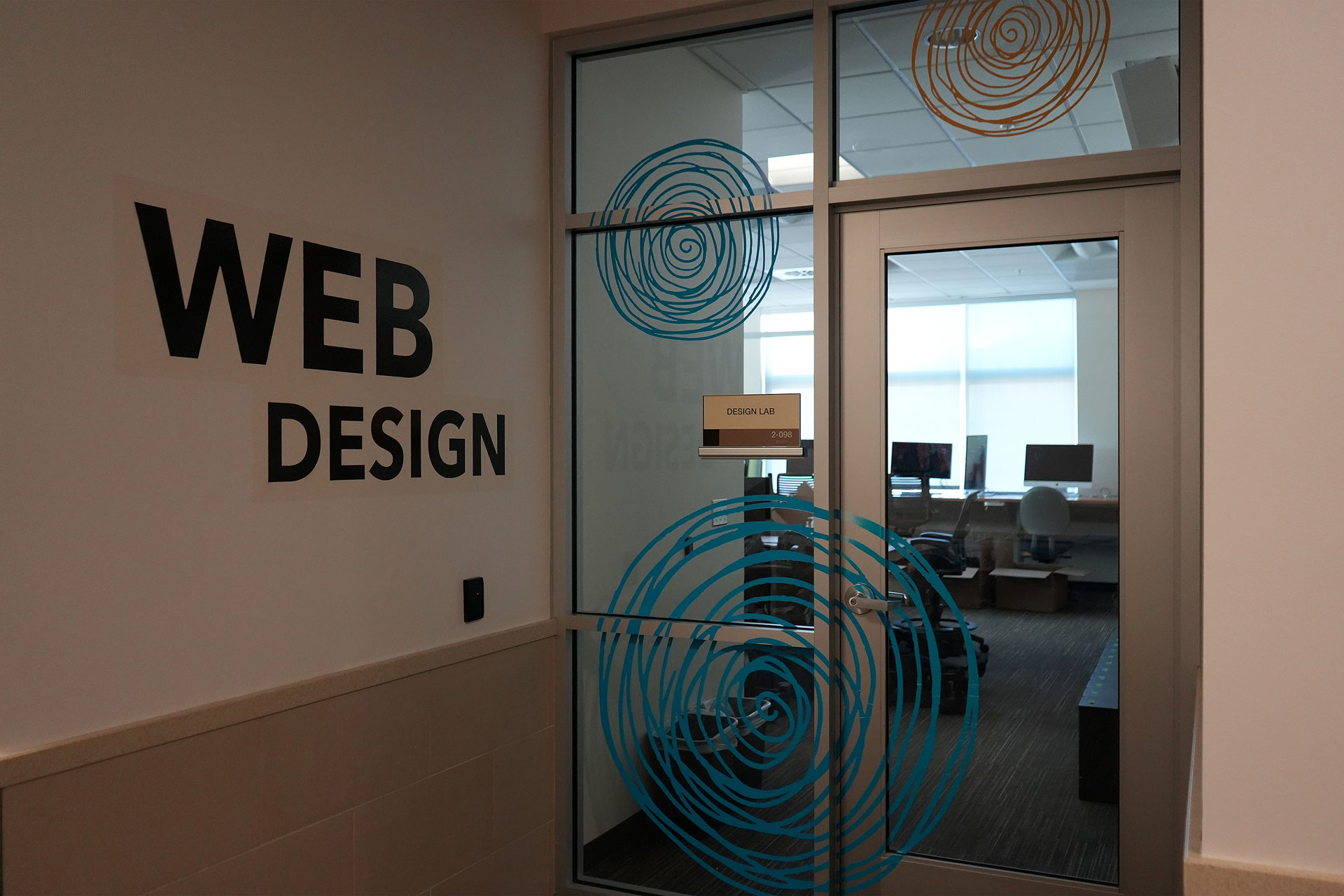
This article does not include all changes to SLCC complying with HB 265. Please reach out to your academic advisor if you have any questions. This is a progressing story.


